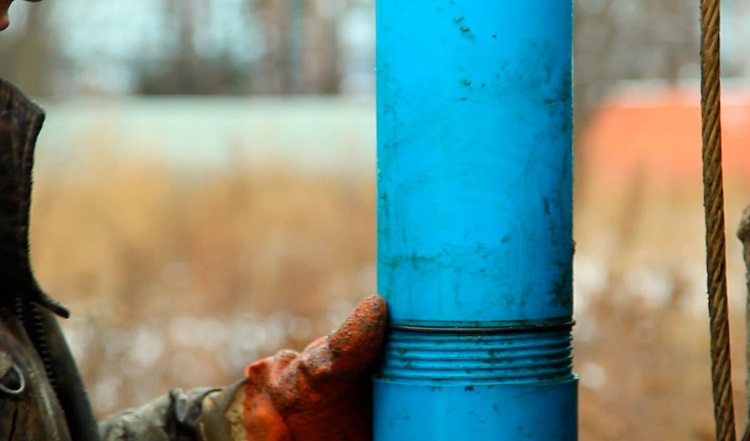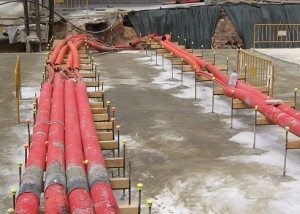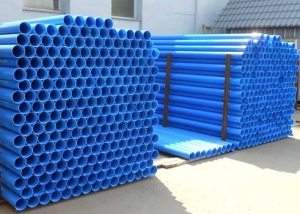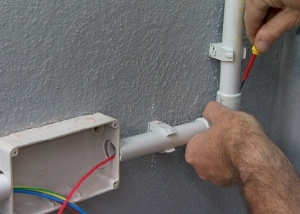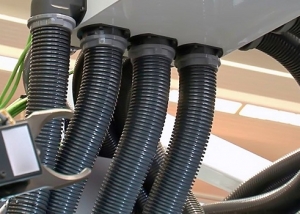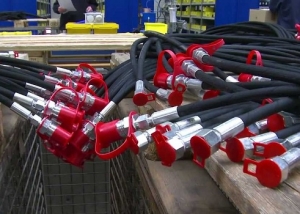A drilled well must be equipped with a special case. Concrete and metal structures used to be used as this structure, which protects the well from shedding of rock. Today, the use of massive, dimensional pipes is not necessary. They were replaced by PVC casing pipes - lightweight and easy to operate.
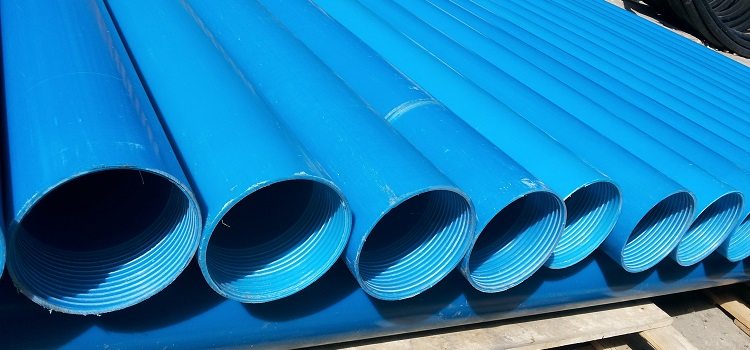
When arranging water wells, it is better to use threaded pipes - such a connection will be reliable and convenient to install
Content
What are the advantages of pipes for PVC wells?
PVC casing pipes (nPVC marking can also be found) are widespread due to the mass of advantages in comparison with other materials. Wells reinforced with plastic products can function well for a much longer time than when using metal pipes. Since PVC has been introduced into mass production relatively recently, it is difficult to calculate the exact shelf life of this material. Presumably, PVC products are able to not lose their properties for 50 years.
The following advantages inherent in pipes for PVC wells can be distinguished:
- low cost of products, installation work and ease of transportation;
- inertness to active chemicals;
- low weight, despite excellent strength indicators;
- the hygiene of the PVC material makes it suitable for casing drinking water wells;
- the thread eliminates the possibility of getting into the system of upper groundwater.
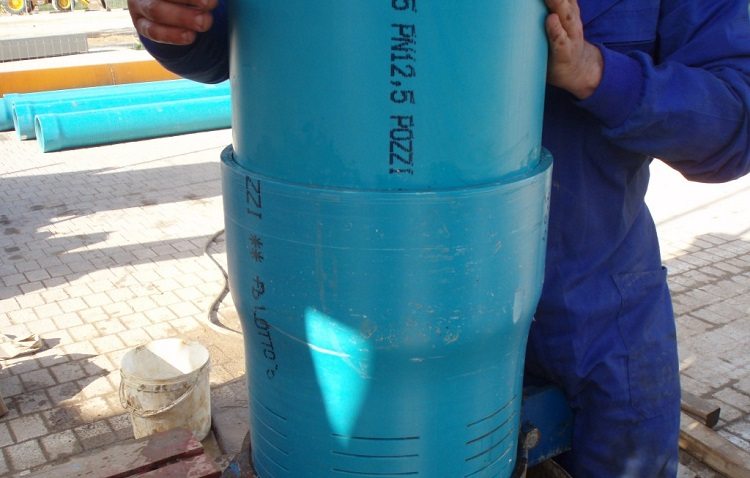
PVC pipes (including large diameters) are lightweight, and you can install them without involving equipment
High strength polyvinyl chloride can reduce the wall thickness of the pipe. Similar pipes from, for example, asbestos cement with a similar throughput will have a more massive wall thickness. Accordingly, when using such structures, the drilling process will be longer.
Characteristics of PVC casing pipes for wells
Pipes for wells are products made of dense plastic - polyvinyl chloride. The most common casing pipes on sale are NPVC (PVC) casing for blue wells. These products are available with a diameter in the range of 80-225 mm. The wall thickness also varies: pipes with a minimum diameter have walls with a thickness of 7 mm, with a maximum of 20 mm. Thick-walled products are used for wells with significant depth.
Helpful advice! The required pipe diameter is determined depending on the maximum possible water flow in the house. For large private houses equipped with water-consuming appliances (2-3 washbasins, washing machine and dishwasher, shower, etc.), the water flow will be about 8 m3 / h. The diameter of the pipe will correspond to the diameter of the pump of the required power, in this case at least 110 mm.
At the ends of the NPVC pipes for the wells there is a thread. On one side of the pipe, the thread is on the outer wall, on the other, on the inside. There are also socket models with external threads that are designed to be mounted to pipes already in the ground. The complete set of products includes plugs.
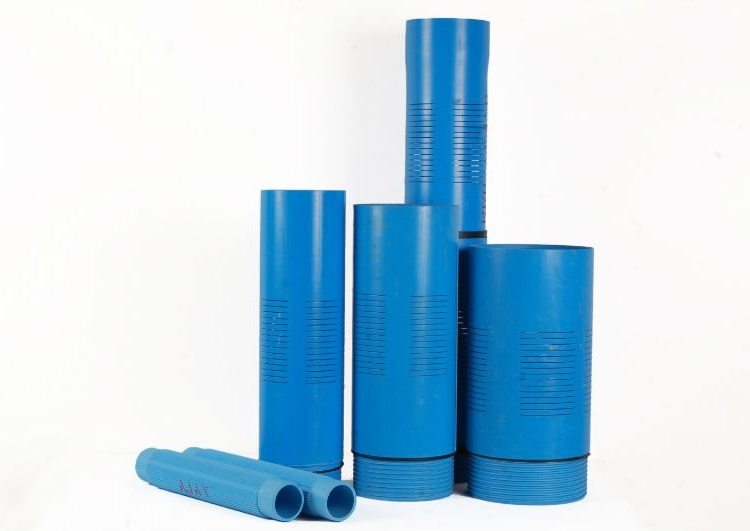
Casing pipes are available in different diameters and with different wall thicknesses, which makes it possible to choose an option even for a deep well
The main principles of installation of PVC casing pipes
It is advisable to purchase a slightly larger size of pvc casing pipes for threaded wells than it is planned to use during installation. It is worth considering the possibility of factory defects or damage to the pipe section during the work. The stock is taken in order to replace the damaged pipe as soon as possible. Usually 1 spare meter is purchased for every 10 meters of the pipeline.
The well drilling process is carried out in several stages. This is a prerequisite, especially for work on sandy soils. Drilling too quickly can lead to collapse of quick-moving soil layers and backfilling of the channel. The stages of drilling prior to the introduction of the pipe into the channel are as follows:
- passing the deepest section (4-5 meters) using a large diameter drill - a drill of 140 mm is usually used;
- drilling of the second section, for which a smaller drill is taken - 130 mm;
- passing a layer of soil close to the upper groundwater, usually occupying no more than 0.5 m;
- in the absence of visible damage in the well, a casing pipe is inserted into it.
As the bottom of the pipe is sufficiently deepened, a second section for installation is introduced into the well. Before connecting the threaded parts of both pipes, it is necessary to wind a sealing tape or put on a silicone sealant on the thread. After making sure that the connection is reliable enough, you can proceed with the installation of the remaining parts of the pipeline.
Helpful advice! The remaining free space between the outer wall of the pipe and the soil should be filled with concrete. An alternative method is to backfill with small gravel or dry cement scaffolds, sitting down from the water vapor of the well.
Particular attention must be paid to the insulation of the upper part of the well shaft. Otherwise, in the cold season, the water will freeze and the PVC material will deform. Hydrotechnical devices, such as pumps, also lose their working ability in cold weather. If the well is used only in the warmer months, then it is recommended to preserve it for the winter. Thermal insulating materials, such as mineral wool, are used to protect casing from cold. Sometimes wells are insulated with improvised materials: sawdust, straw or dry leaves. This method is relevant only for regions with a stably mild climate.
Some Features of PVC Casing
PVC casing pipes designed for well casing have a number of features. They should be taken into account during installation so that the pipeline functions for a long time and correctly:
- Despite the wear resistance and resistance to mechanical damage, polyvinyl chloride is quite vulnerable. In order not to damage the casing npvc for threaded wells, the well must be drilled very smoothly and accurately. Due to the presence of thresholds and protrusions in the soil, the pipe may burst.
- NPVH casing pipes do not tolerate high temperatures. Polyvinyl chloride begins to soften if the external temperature reaches 60 degrees. Therefore, casing should be used exclusively for its intended purpose, because the temperature in the wells never reaches a critical point.
- When screwing pipes with threads, it is better to use belt tools. They gently act on the walls, eliminating the possibility of damage and crushing of plastic.
- If a long well is to be drilled, casing pipes of different diameters can be purchased. This design will narrow downwards in the form of an inverted cone. For ease of installation, adapters of different sizes are used.
In the drilling of wells and the installation of casing, there are practically no particular difficulties if work is carried out with exact compliance with technical regulations. In the event that installation work was carried out without any violations, you can be sure of the quality of the water received and the durability of the well.
